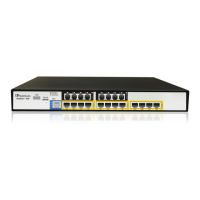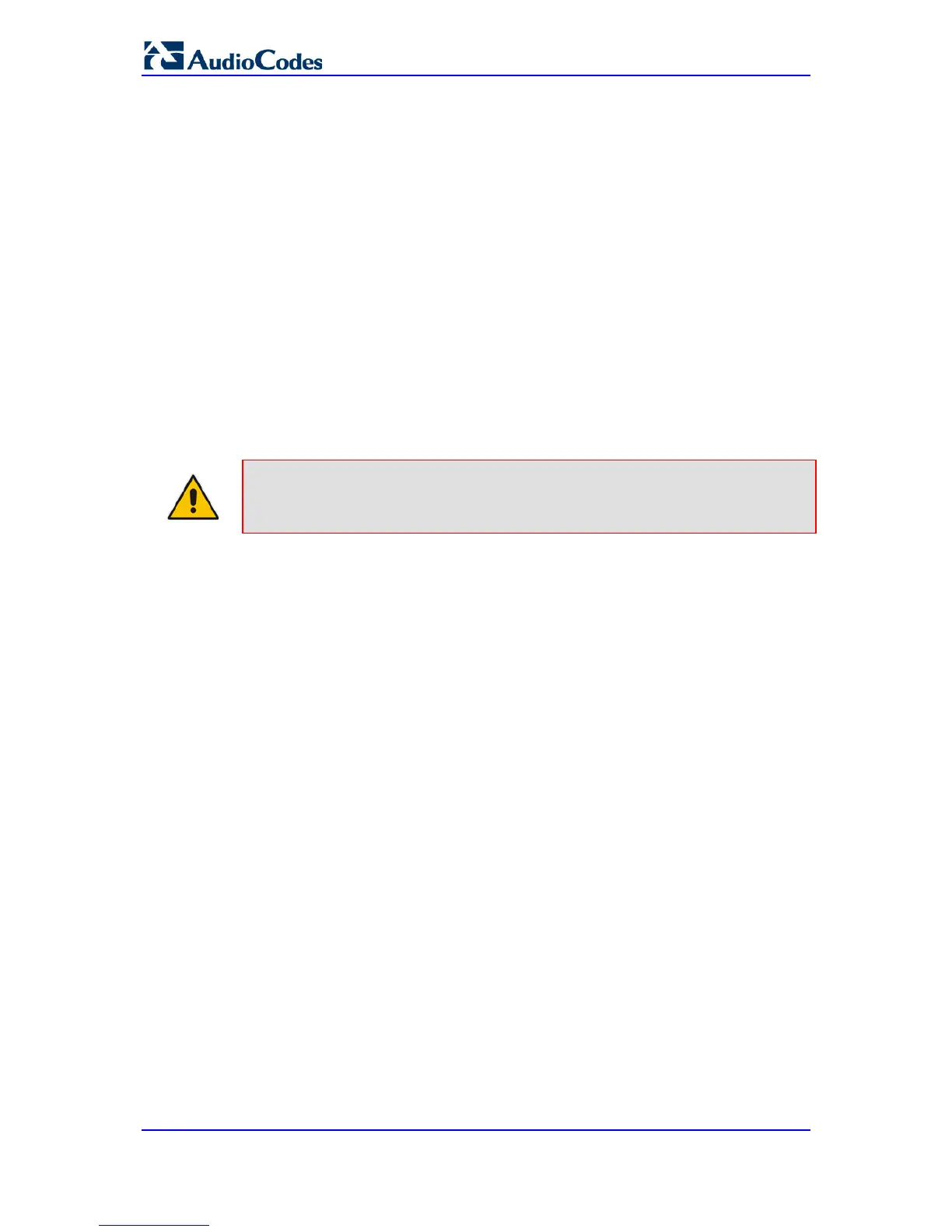User's Manual 360 Document #: LTRT-12809
Mediant 800 MSBR
b. The device sends a Q.931 Setup message to "C". This feature enables
manipulating the called party number in this outgoing Setup message.
The manipulation is done as follows:
1. If you configure a value for the xferPrefix parameter, then this value (string) is added
as a prefix to the number in the Refer-To header.
2. This called party number is then manipulated using the IP-to-Tel Destination Phone
Number Manipulation table.
3. The source number of the transferred call is taken from the original call, according to
its initial direction:
• Tel-to-IP call: source number of the original call.
• IP-to-Tel call: destination number of the original call.
• If the UseReferredByForCallingNumber parameter is set to 1, the source number
is taken from the SIP Referred-By header if included in the received SIP REFER
message.
This source number can also be used as the value for the 'Source Prefix' field in the
IP-to-Tel Destination Phone Number Manipulation table. The local IP address is used
as the value for the 'Source IP Address' field.
Note: Manipulation using the ManipulateIP2PSTNReferTo parame
affect IP-to-Trunk Group routing rules.
28.6 Call Forward
For digital interfaces: The device supports Call Deflection (ETS-300-207-1) for Euro ISDN
and QSIG (ETSI TS 102 393) for Network and User sides, which provides IP-ISDN
interworking of call forwarding (call diversion) when the device receives a SIP 302
response.
Call forward performed by the SIP side: Upon receipt of a Facility message with Call
Rerouting IE from the PSTN, the device initiates a SIP transfer process by sending a SIP
302 (including the Call Rerouting destination number) to the IP in response to the remote
SIP entity's INVITE message. The device then responds with a Disconnect message to the
PSTN side.
Call forward performed by the PSTN side: When the device sends the INVITE message to
the remote SIP entity and receives a SIP 302 response, the device sends a Facility
message with the same IE mentioned above to the PSTN, and waits for the PSTN side to
disconnect the call. This is configured using the CallReroutingMode.
For analog interfaces: The following methods of call forwarding are supported:
Immediate: incoming call is forwarded immediately and unconditionally.
Busy: incoming call is forwarded if the endpoint is busy.
No Reply: incoming call is forwarded if it isn't answered for a specified time.
On Busy or No Reply: incoming call is forwarded if the port is busy or when calls are
not answered after a specified time.
Do Not Disturb: immediately reject incoming calls. Upon receiving a call for a Do Not
Disturb, the 603 Decline SIP response code is sent.
Three forms of forwarding parties are available:
Served party: party configured to forward the call (FXS device).
Originating party: party that initiates the first call (FXS or FXO device).
Diverted party: new destination of the forwarded call (FXS or FXO device).

